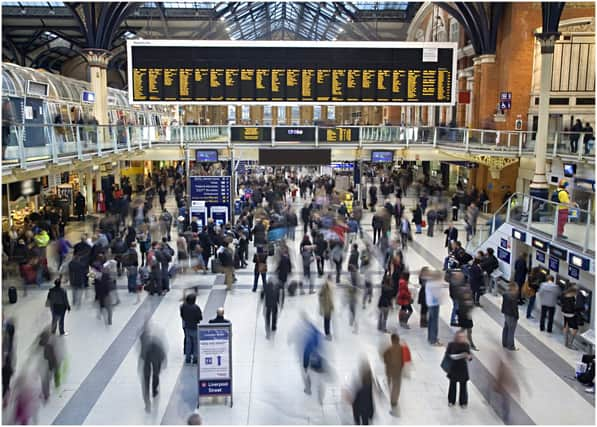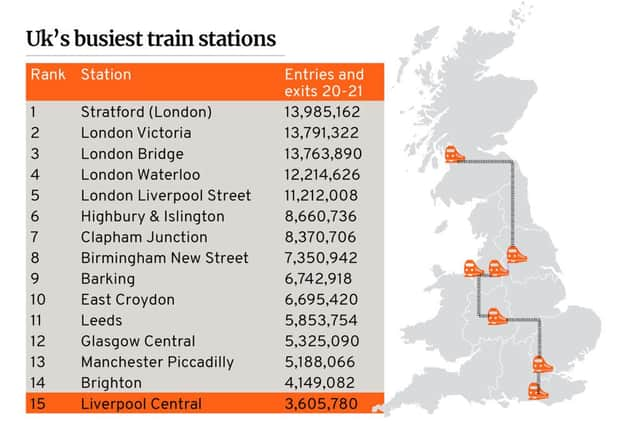The most and least used railway stations in Britain revealed


The busiest railway stations in the UK have been revealed - and it is the first time in 17 years that Waterloo in London does not top the list.
Just 12.2 million people used Waterloo in 2020/21, which was down from 86.9 million a year earlier making it the fourth busiest station.
Advertisement
Hide AdAdvertisement
Hide AdPassenger numbers across Britain dropped by 78% over the 12-month period due to the coronavirus pandemic.
The figures, which are based primarily on ticket sales, are released every year by the Office of Rail and Road (ORR).
Here we take a look at which stations topped the list.
Which railway station is the busiest in the UK?


Stratford was named Britain’s busiest railway station with around 14 million passengers travelling through the east London hub in the year to the end of March.
The station is a key interchange, enabling people to connect with other transport routes and is served by c2c, Greater Anglia, London Overground and TfL Rail mainline services.
Advertisement
Hide AdAdvertisement
Hide AdThe station also has London Underground and bus connections.
Birmingham New Street was the busiest station outside London, with 7.4 million passengers.
Scotland’s most used station was Glasgow Central (5.3 million), while Cardiff Central (2 million) took top spot in Wales.
Which railway stations were the least busy?
Six stations had no passengers in 2020/21, mainly due to services being suspended because of the virus crisis.
Advertisement
Hide AdAdvertisement
Hide AdThey were: Abererch, Gwynedd; Beasdale, Highland; Llanbedr, Gwynedd; Sampford Courtenay, Devon; Stanlow and Thornton, Cheshire; and Sugar Loaf, Powys.
Publicity surrounding last year’s least-used station – Berney Arms in Norfolk – saw its passenger usage increase eight-fold, from 42 to 348.
That was the biggest percentage increase of any station compared with the previous year.
‘We have seen a radical change in the stations people use’
ORR director of planning and performance Feras Alshaker said: “We’ve seen a radical change, especially in London, in the stations people were using the most.
Advertisement
Hide AdAdvertisement
Hide Ad“Stratford, Highbury and Islington, Clapham Junction, Barking and East Croydon replaced Kings Cross, St Pancras, Euston and Paddington in the top 10, underlining their importance as vital stops and interchanges, linking key workers with Underground and bus services to travel.
“This year we have seen many railway stations with very few passenger entries and exits. However, we know that recent figures show leisure journeys are nearly back to pre-pandemic levels, while there has been a slower increase in commuter journeys.”
A version of this article originally appeared on NationalWorld.com